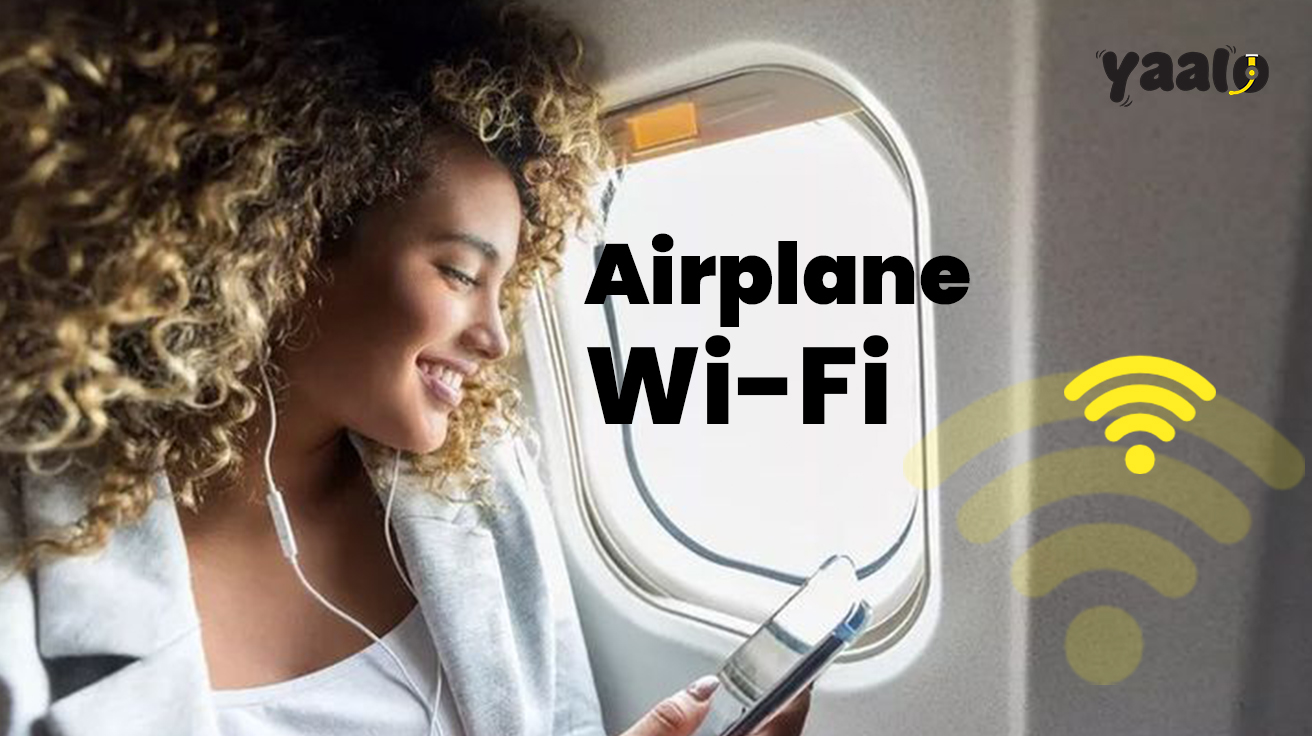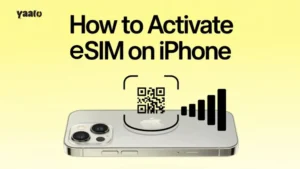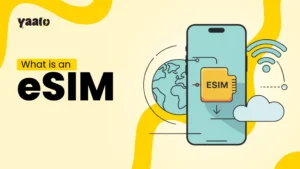You’re 38,000 feet above ground, trying to pass the time, catch up on emails, stream a show, or send a quick update to someone waiting on you back home. You reach for your phone… and then remember: “Ugh, airplane mode.”
But here’s the good news—airplane Wi-Fi is no longer the frustrating, glitchy luxury it used to be. These days, it’s faster, more reliable, and, in many cases, even free. And when you pair it with something smart like Yaalo eSIM, staying connected in the air and on the ground becomes effortless.
In this guide, we’ll walk you through everything you actually want to know about inflight Wi-Fi—how it works, how much it costs, which airlines offer the best service, and how to get the most out of it without wasting money or losing your patience.
Let’s start—because offline is officially out of style.
How Does Airplane Wi-Fi Even Work?
Imagine this: you’re 35,000 feet in the air, flying over the ocean, and somehow still able to send a meme to your group chat. Sounds wild, right? But it’s real—and it’s all thanks to two types of inflight internet tech:

1. Air-to-Ground (ATG) Networks
This works like a cell tower system. The plane connects to ground towers as it flies overhead. It’s more common on domestic flights and generally slower. Think of it as 3G in the sky—fine for emails, but streaming Netflix? Not so much.
2. Satellite-Based Wi-Fi
This is the real MVP for international or long-haul flights. Planes connect to satellites orbiting Earth, which bounce signals between you and the web. Speeds are better, coverage is global, but it’s also pricier to maintain.
Is Airplane Wi-Fi Free?
Let’s get this out of the way—most of the time, no, it’s not.
Some airlines (like JetBlue) offer free inflight Wi-Fi, but they’re the exception. Most charge a fee—anywhere from $5 for a quick session to $20+ for all-day access. Business and first-class passengers might get it included but for the rest of us? Better check before takeoff.
Pro tip: Some airlines offer discounted Wi-Fi if you buy before your flight. Always worth checking their app or website.
What Can You Actually Do With Inflight Wi-Fi?
Here’s a reality check: inflight Wi-Fi isn’t your home fiber connection. Speeds vary wildly depending on your flight route, the weather, the number of users, and the tech onboard.
You can usually:
- Send and receive emails
- Use WhatsApp or Messenger (text only)
- Browse light websites
- Scroll social media
You might struggle with:
- Streaming HD videos
- Video calls
- Online gaming
Bottom line? It works best for staying in the loop, not binging your favorite shows.
Tips for Using Airplane Wi-Fi Without the Headache
Want your inflight internet to actually work for you? Try these traveler-tested tips:
Prep Your Content in Advance
Download any entertainment, work files, maps, or music before you even leave for the airport. It saves both time and frustration once you’re in the air.
Use Your Airline’s App
Many airlines offer a simple way to stay connected by letting you send messages through their app, even without a full Wi-Fi plan. It’s an easy and free option to stay in touch while you’re in the air.
Minimize Data Usage
If you’re trying to conserve your data, stick to lighter websites. Every little bit counts, especially when you need to stretch your connection for the whole flight.
Keep It Secure
In-flight Wi-Fi isn’t always the most secure, so it’s smart to be cautious. If you’re accessing sensitive accounts or sharing private info, using a VPN can add an extra layer of protection.
Have a Backup Plan with an eSIM
Once you land, skip the overpriced airport SIM counters. With Yaalo eSIM, you can connect to local data networks in over 200 countries in minutes—no physical SIM card, no roaming fees, just instant access.
Where Inflight Wi-Fi Is Headed
The days of painfully slow airplane internet may soon be behind us. Airlines are doubling down on next-gen satellite tech—think Starlink and Viasat—which promises better speeds, lower latency, and eventually, more affordable (even free) access.
In the near future, seamless streaming and reliable mid-air connectivity could become as common as tray tables and aisle carts. Till then, Yaalo eSIM is the best choice for you!
Conclusion
Sometimes, airplane Wi-Fi feels like magic. Other times, it’s just plain frustrating. The difference? Knowing what to expect—and being ready for it. Download what you need, check your airline’s Wi-Fi policy, and have a plan for when you land (hint: a reliable eSIM doesn’t hurt).
In today’s world, staying online at 35,000 feet isn’t futuristic anymore—it’s part of the travel experience. So prep smart, browse safely, and enjoy the flight.
Buy Yaalo eSIM and Here’s to smooth skies and even smoother connections.
FAQs
Is airplane Wi-Fi free?
Most airlines charge for inflight Wi-Fi. Some, like JetBlue, offer it for free, but these are exceptions. Prices range from $5 for a short session to $20+ for full-day access. Always check your airline’s app for discounts or special offers.
How does airplane Wi-Fi work?
There are two main types: Air-to-Ground (ATG) networks, which use ground towers for domestic flights, and Satellite-Based Wi-Fi, which connects to satellites for international flights. The latter offers faster speeds but is more expensive.
Can I stream videos on airplane Wi-Fi?
Streaming HD videos can be tricky on inflight Wi-Fi. While you can browse social media, send emails, and use messaging apps, video calls and online gaming might struggle due to the limited bandwidth.
- Best Time to Visit Argentina – A Yaalo eSIM Travel Guide! - October 10, 2025
- Best Time to Visit Vietnam: A Traveler’s Guide! - October 8, 2025
- Guide for Travelling From London to Paris by Eurostar! - October 8, 2025








